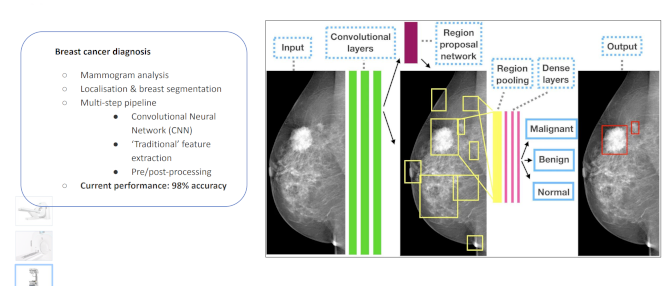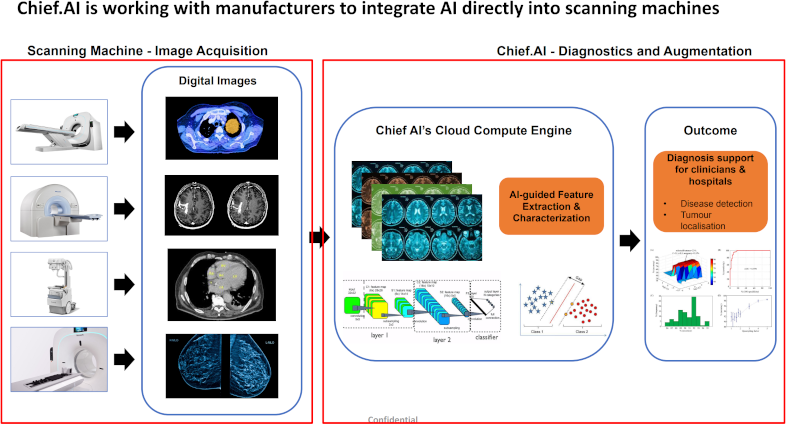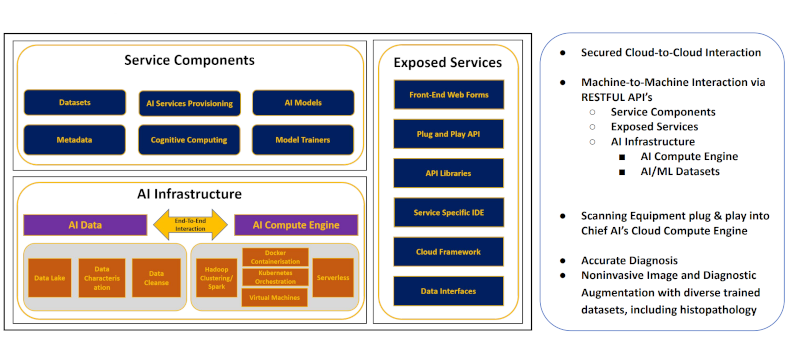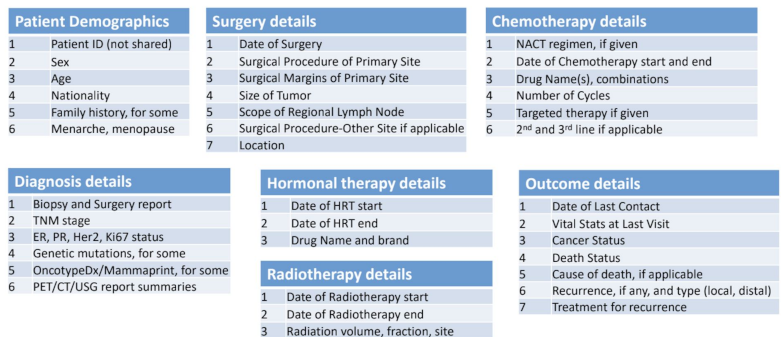Chief.AI provides a range of AI services and algorithms to help the efficient diagnosis and prognostic management of many types of cancer.
• Chief.AI helps provide solutions using Artificial Intelligence (AI) to diagnose cancer earlier, and treat cancer patients with targeted drugs.
• The technology uses millions of datasets to learn cancer & pre-cancer characteristics, and processes patients’ imaging to detect the occurrence of such cancers with great accuracy.
• Chief.AI’s Oncomise service utilises generative AI technologies to create the best personalised treatments with optimal costs to guide prognosis.
• Patients recover faster, putting less burden on the economy due to more efficient treatment. The solution reduces costs of patient care in public and private sectors.
• Chief.AI is making quality healthcare equally available to both poorer rural communities and urban
centers.
• Cancers treated include lung cancer, colon cancer, and breast cancer.
Cancer Diagnostic Models
Chief.AI builds imaging-based AI algorithms to help diagnose malignancies such as breast cancer more efficiently through image-based diagnostics, mammography and histopathology analysis.
CT Scan and mammogram images are fed directly from diagnostic machines into the Chief.AI API utilising algorithms based on convolutional neural networks, providing rapid diagnostic results with very high accuracy.
Convolutional Neural Networks (CNNs) can help diagnose tumors in CT scan images by identifying patterns and features in the scans that are indicative of a tumor. The CNN is trained on a large dataset of CT scan images, both with and without tumors, so that it can learn to recognize the characteristics of a malignant lesion.
Once trained, the CNN can then be used to analyze new CT scan images and make predictions about whether or not they contain a tumor. This can help radiologists to more quickly and accurately identify tumors in CT scans, and help us build important tools for computer-aided diagnosis (CAD).
This can help radiologists to more quickly and accurately identify conditions in medical images, and may also be used to provide second opinions or as a tool for telemedicine. CAD is also used to create a "computer-aided detection" (CADe) system, which can flag regions in an image that are likely to contain a condition of interest, allowing radiologists to focus their attention on those areas.

Histopathology based diagnostics
Histopathology slides generated as a result of patient biopsies can be used as test data against histopathological AI models. Histopathology based diagnostic services can detect cancerous cells in potential tumour tissues with a high level of accuracy.

Chief.AI’s cancer diagnostic services can be integrated directly into diagnostic machines through hospital information systems and PACS systems. It supports popular data standards such as HL7 FHIR.

Machine to Machine integration
Chief.AI’s cloud-based AI service is able to integrate with most API systems through its RESTful API. These integrations span the range of popular computing endpoints on cloud infrastructure, as well as more specialised hardware such as MRI or CT scan machines. This enables machine to machine integration from Chief AI’s high powered GPU intensive machine learning resources to hospital and healthcare consumer endpoints.

Oncomise – AI-powered Cancer Treatment Optimisation
The acquisition of high quality granular datasets through research collaborations allows Chief.AI to build high quality medical foundation models that enable cancer treatment optimisation and prognosis management under the Oncomise service. As an example, let’s take a look at some of the data points used to train breast cancer prognosis and treatment optimisation AI models.

Oncomise helps guide treatment and drug selection, chemotherapy, immunotherapy and radiotherapy treatment sequence, and helps predict possible outcomes over a five year period.